💕HELLO MY LOVELY FRIEND! 💕
I hope you have had a great autumn and thank you for supporting my music. I’m happy to share my recent news and busy organising a workshop tour in Nov for UK Polish Saturday schools and my musical projects for 2024. I had an interesting research trip to Poland this month and thank very much the people who were kind and helped me with my work.
🎵 NEWS UPDATE 🎵
I’m delighted to inform the Polish Sat School UK network that I have been granted Artist Fees from Wspólnota Polska in Warsaw to carry out my “Śpiew Patriotyczny” workshop appointments in four Polish Saturday school locations in the UK between the dates 28th Oct – 9th Dec 2023
The workshops are the next in series from my recent Katy Carr workshops ‘Śpiewamy Historię (We Sing Our History)’ for Polish Saturday School children which I performed in cooperation with the Polish Educational Society Polska Macierz Szkolna earlier this year in the UK. The main mission with these musical workshops is to help the students learn the history of Poland, in particular the history around the Battle of Monte Cassino through song learning and discussion including Czerwone maki na Monte Cassino and my song ‘Wojtek’ the Soldier Bear – watch the music video here directed by the British film maker Hannah Lovell https://www.youtube.com/watch?v=-1uEn7dvne8
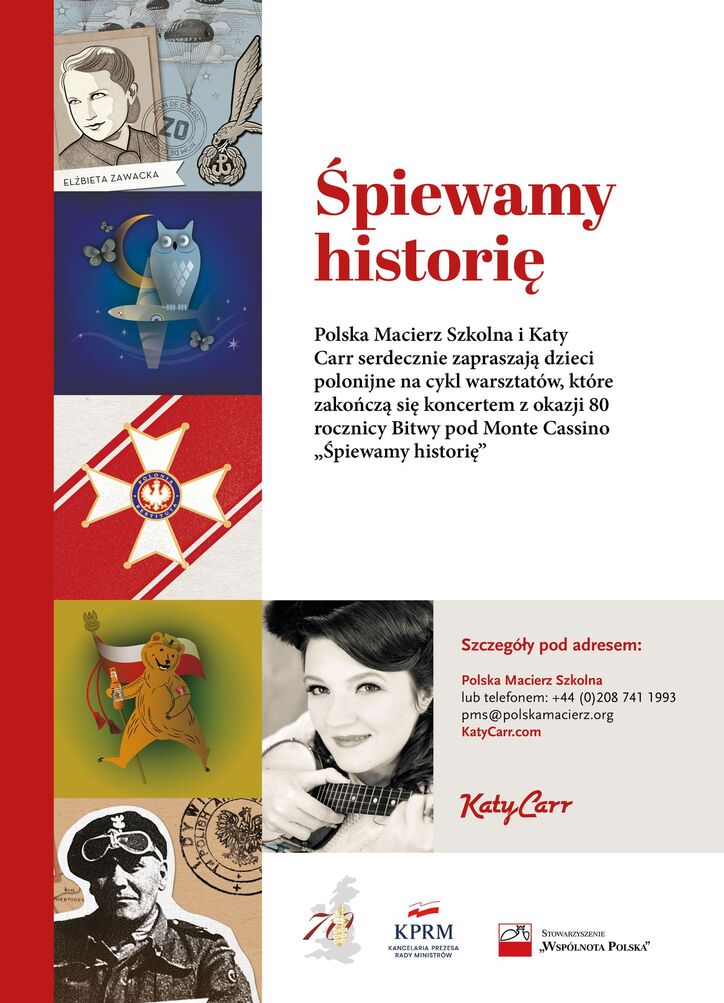
🎵 POLISH SATURDAY SCHOOL WORKSHOPS 🎵
I’m excited to announce that the following schools have confirmed dates and will be benefitting from my singing workshops (artist fee is funded from Poland) :-11th Nov 2023 – LIVERPOOL 18th Nov 2023 – BRISTOL25th Nov 2023 – POSK 2 Dec 2023 – ENFIELD 9 Dec 2023 – GLASGOW
Projekt jest muzycznym wydarzeniem dla publiczności, mającym na celu krzewienie polskich piosenek patriotycznych poprzez śpiew, interakcje i występy. Celem jest pomoc Polonii w Wielkiej Brytanii w uświadomieniu sobie jej związku z historią polskiej piosenki i uczczenie wielkiego dzieła podjętego przez emigrację na rzecz zachowania polskiej kultury po II wojnie światowej.
❤️ A BIG THANK YOU It was such a great time dedicating my performance to the Wyspa TV All Stars concert and my Polish heritage – I love my Polish roots and you made me feel so welcome and appreciated ! I love talking about my Polish family and I’m very proud of my Polish Mother, my Polish Grandmother and my Polish Grandfather (who escaped from both Dachau and Auschwitz concentration camps in WWII) – what a proud Polish heritage I have 🙂 It was great to celebrate the fact that over the past decade I’ve dedicated my time and energy to promoting Poland and my Polish roots through the 50 musical song compositions that I’ve written and through countless musical concerts and performances. How wonderful to celebrate our shared Polish ancestry together! Wyspa TV is a great platform and it is so fantastic to know that people research your story thoroughly and are able to present it so accurately 🙂
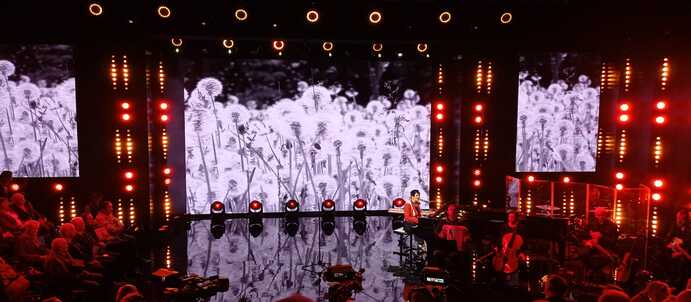
❤️ A BIG THANK YOU to The Józef Piłsudski Museum in Sulejówek (Muzeum Józefa Piłsudskiego w Sulejówku). It was amazing to see where the wonderful Marshal Józef Piłsudski lived. Known as the father of Poland’s Second Republic, I look forward to dedicating a concert to the great man at the museum soon. For more info visit – https://m.facebook.com/muzeumpilsudski. Thank you to Pani Jadwiga Czechowska and Pan Jerzy and for the fantastic visit. ❤️ A BIG THANK YOU to Anna Dąbrowska for this wonderful article and congratulations on winning an award for the interview JESTEM GŁOSEM TYCH, KTÓRZY GO NIE MIELI (W. BRYTANIA) http://pai.media.pl/pai_wiadomosci2.php?id=24124
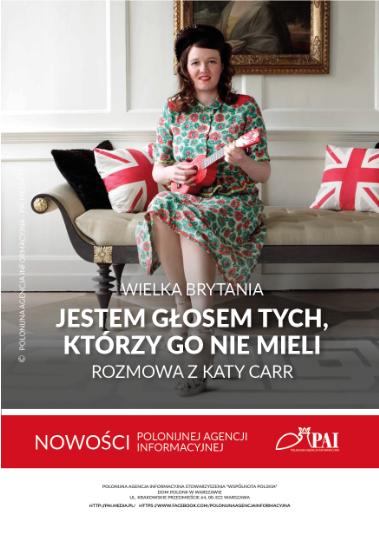
❤️ A BIG THANK YOU to the staff at The Ul Strzelecka 8 Museum – dedicated to exposing the crimes against humanity inflicted by #russianaggression on the Allied freedom fighters of Poland during the WWII. Over 30 secret locations were chosen in residential blocks alone in Warsaw alone of murder and #torture of #russianaggression to Polish Allied freedom fighters in 1944 into the Cold War #crimesofcommunism#communistcrimes#crimesagainsthumanity Thank you to Arkadeusz my guide from Instytut Pamięci Narodowej @ipn.o.warszawa ❤️ A BIG THANK YOU for a wonderful performance where I could perform my Polish songs at such a great location. Preparing for the celebration of my Wyspa TV Music Star of Polish Heritage Award performance with my wonderful band in Poland … I am so proud of Wyspa TV they really celebrate and give voice to everyone who has Polish roots. They celebrate Polishness in such a great way!
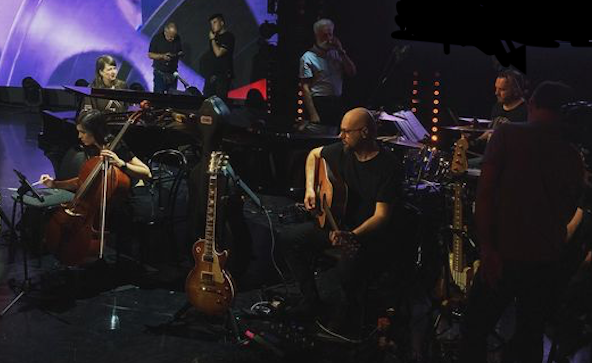
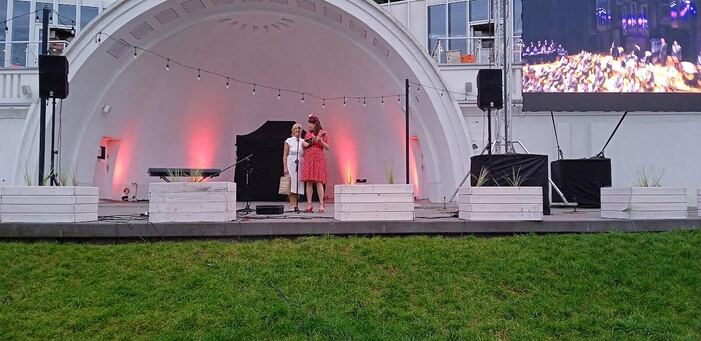
Thank you to Maja’s team for the great makeup session!
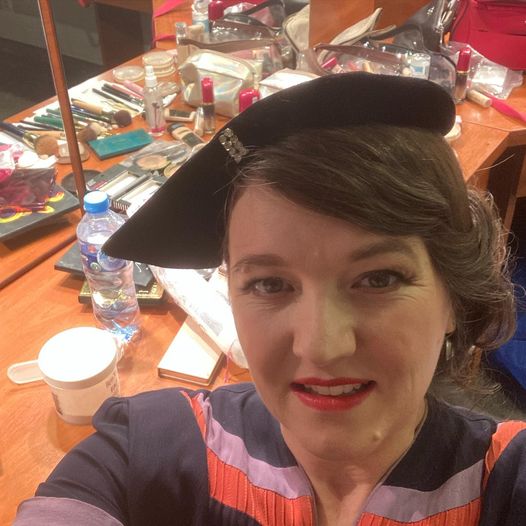
So proud to receive my award for Wyspa TV Star Award of Polish Heritage – what an honour!

❤️ A BIG THANK YOU to RME Radio and so lovely to meet the Polish singer Ela Kalicka – I look forward to making music with her – thank you so much Helena Judd and Father Toby for the introduction! below we are being interviewed about our music and love of the All Saints Day and All Souls Day and the slavic and Church customs in Poland. Link coming soon on this portal – https://open.spotify.com/show/3zoamrde7lTuFhbzD2QIMu?si=b64eeaefb57d4421&nd=1
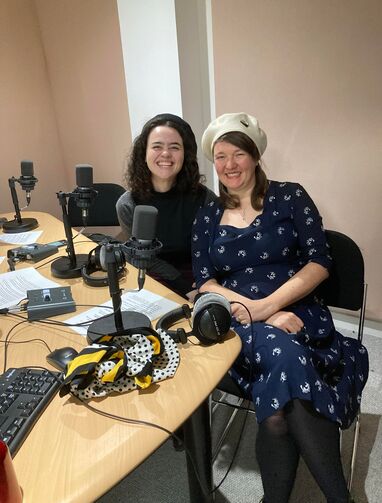
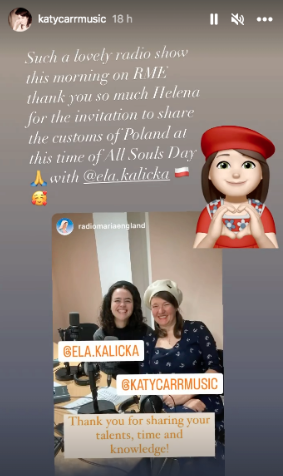
❤️ A BIG THANK YOU to Simon Bromide for inviting me to perform on his latest record – I loved being in the recording studio with you – and good luck with your next record!
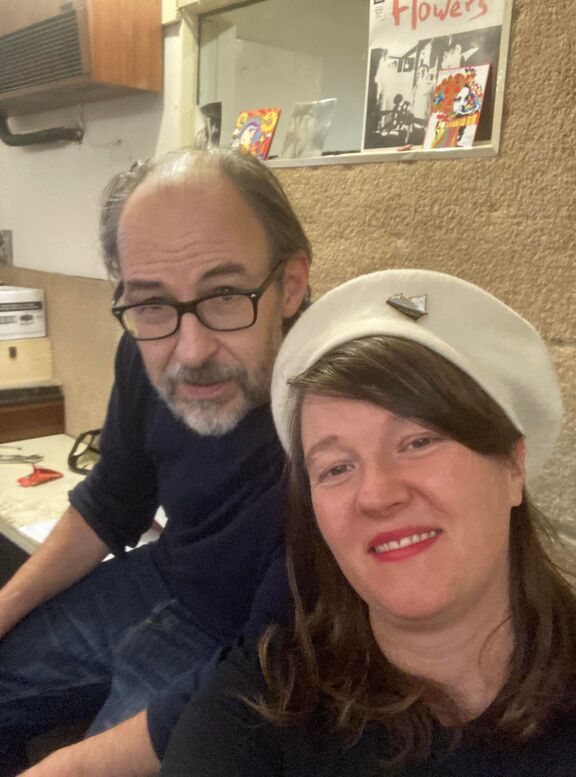
❤️ A BIG THANK YOU to Jerzy Yurek Majcherczyk for his wonderful book “Conquest of Rio Colca – The World’s Deepest Canyon” – I was so delighted to meet him and see his wonderful film – Godspeed, Los Polacos please watch it – it’s brilliant and I look forward to helping Yurek promote the film in the UK – watch here https://www.amazon.co.uk/Godspeed-Los-Polacos-Jared-Seiler/dp/B09F3K1KMC IMDB link :- https://www.imdb.com/title/tt13235810/
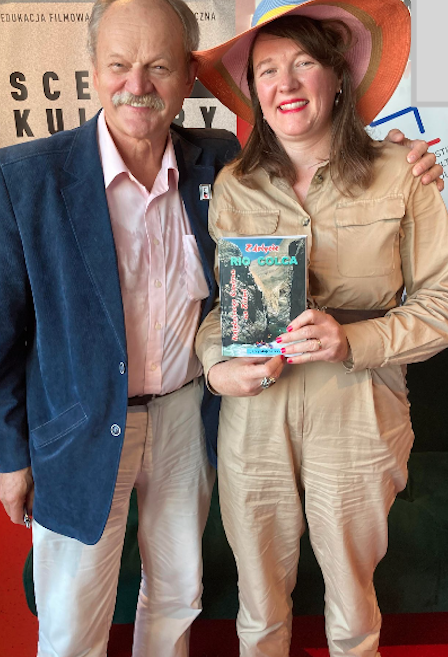
✨WE REMEMBER JAN STANGRYCIUK -BLACK ✨Jan Stangryciuk-Black, the last surviving member of the RAF’s ‘Guinea Pig Club’ has died aged 101. A rear gunner in the 300 Bomber Squadron, he demonstrated immense courage and resilience throughout his life. Jan Stangryciuk-Black, a Polish veteran, was one of the airmen who underwent pioneering plastic surgery after suffering burn injuries in the Second World War. The brave men, who numbered 649 by the end of the war, jokingly referred to themselves as the Guinea Pig Club due to the uncertain outcomes they faced during treatment. Below pictured at the Polish Air Force Memorial at RAF Northolt, London and Architect Alexander Smaga at RAF Uxbridge. Alexander who designed and built the Polish Air Force Memorial for DDAY 75 in Normandy, France.
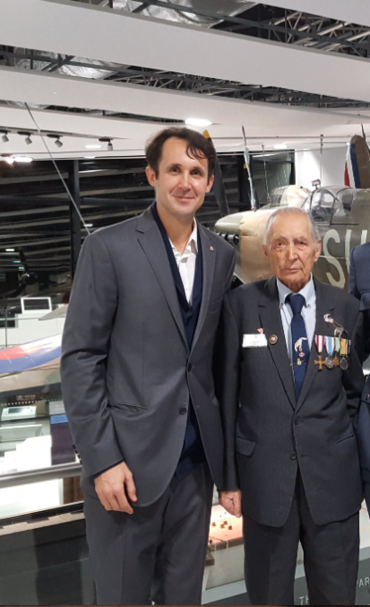
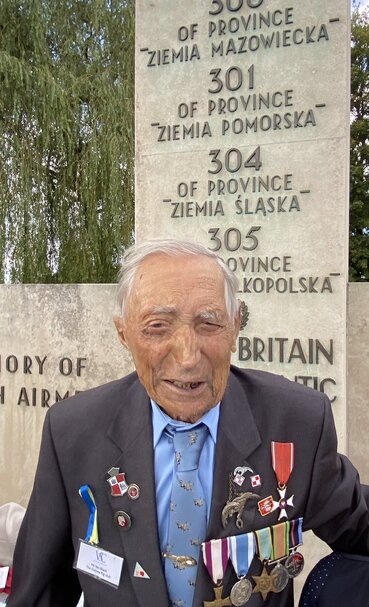
✨WE REMEMBER PETER WOODCOCK RIP ✨Peter Woodcock 1939 – 2023 Our friend, Peter Woodcock died on Monday 4th October at the age of 84. He wrote a number of lovely books, including This Enchanted Isle and Stone Clouds-Liquid Skies, The Shamanic Art of Derek Hyatt and written other books under a pseudonym. He was a superb observer of and participant in the ‘counterculture’ in Glastonbury, New York, Algeria and Paris. Below is an article he wrote about William Blake in his book “The Enchanted Isle”. Awake! Albion Awake! In an excerpt from his book ‘This Enchanted Isle’, Peter Woodcock discusses William Blake (1757-1827) and his influence on subsequent generations of Romantic and Neo-romantic artists. Published in response to the Dark Monarch at Tate St Ives.Madman, visionary, revolutionary, genius, even today William Blake is considered to be all of these. His writings still reverberate in the twenty-first century, and his engravings and watercolours still excite and disturb.Born in Soho, the son of a London hosier, Blake had  little formal education, but was steeped in the Greek and Latin classics, Milton and the Bible. When his younger brother died from consumption aged twenty, an exhausted Blake, who had nursed his brother throughout, said that he witnessed his brother’s soul ascending towards heaven. Blake had seen angels and heavenly forms since childhood. His father reprimanded him for saying that he had seen the prophet Ezekiel sheltering beneath a tree. Blake saw angels in a tree on Peckham Rye and throughout his life he conversed with spirits. Growing up in eighteenth century London, he was in the midst of a whole world of visionary and dissenting religious teachings. As a Londoner, the capital was where he witnessed most of his visions. Wandering through each chartered street, he experienced a visionary city – the Four-Fold city which could be witnessed by anyone who shed the dust from the mundane world.The capital was a city seething with riots and disorder. Britain was under threat from France, sedition was in the air, revolution underfoot. Blake was sympathetic to radical politics; it is said that he knew Tom Paine and helped him flee the country. As well as politics, Blake embraced the teachings of the Swedish theologist Emmanuel Swedenborg with enthusiasm, but later in life rejected them, finding more sustenance in the writings of Paracelsus and Jacob Boehme. Boehme in particular had a profound effect on Blake with his concept that Man contained not only the Sun, Moon, Stars and universe within him, but God as well, which resonated with Blake’s own beliefs. It was while apprenticed as a young man to the engraver James Basire that Blake was asked to make drawings of the royal tombs in the chapel of Edward the Confessor in Westminster Abbey. This great Gothic masterpiece, ‘a book in stone’ which Victor Hugo called the Abbey, thrilled the young Blake. The very essence of the architecture with its pageant of British history encased in stained glass, carved effigies and ancient tapestries, struck a deep chord in him.While drawing in the Abbey he had more visions, of monks and priests. It was as if he were witnessing the archetypal realm of the nation, something to which he would return for the rest of his life. Even the Archangel Gabriel appeared to him in majestic glory, and moved the universe.
little formal education, but was steeped in the Greek and Latin classics, Milton and the Bible. When his younger brother died from consumption aged twenty, an exhausted Blake, who had nursed his brother throughout, said that he witnessed his brother’s soul ascending towards heaven. Blake had seen angels and heavenly forms since childhood. His father reprimanded him for saying that he had seen the prophet Ezekiel sheltering beneath a tree. Blake saw angels in a tree on Peckham Rye and throughout his life he conversed with spirits. Growing up in eighteenth century London, he was in the midst of a whole world of visionary and dissenting religious teachings. As a Londoner, the capital was where he witnessed most of his visions. Wandering through each chartered street, he experienced a visionary city – the Four-Fold city which could be witnessed by anyone who shed the dust from the mundane world.The capital was a city seething with riots and disorder. Britain was under threat from France, sedition was in the air, revolution underfoot. Blake was sympathetic to radical politics; it is said that he knew Tom Paine and helped him flee the country. As well as politics, Blake embraced the teachings of the Swedish theologist Emmanuel Swedenborg with enthusiasm, but later in life rejected them, finding more sustenance in the writings of Paracelsus and Jacob Boehme. Boehme in particular had a profound effect on Blake with his concept that Man contained not only the Sun, Moon, Stars and universe within him, but God as well, which resonated with Blake’s own beliefs. It was while apprenticed as a young man to the engraver James Basire that Blake was asked to make drawings of the royal tombs in the chapel of Edward the Confessor in Westminster Abbey. This great Gothic masterpiece, ‘a book in stone’ which Victor Hugo called the Abbey, thrilled the young Blake. The very essence of the architecture with its pageant of British history encased in stained glass, carved effigies and ancient tapestries, struck a deep chord in him.While drawing in the Abbey he had more visions, of monks and priests. It was as if he were witnessing the archetypal realm of the nation, something to which he would return for the rest of his life. Even the Archangel Gabriel appeared to him in majestic glory, and moved the universe.![]()
 His first engraving is Joseph of Arimathea among the Rocks of Albion (picture above right). A rather solid patriarchal figure broods on a rugged coast against which the sea is raging. It is interesting that Blake chose this figure (although biblical figures were popular as artistic subjects in Blake’s time) for Joseph was none other than the uncle of Jesus who brought the Holy Grail containing the blood of Christ to Britain and created the first Christian church in the land at Glastonbury. Blake’s immortal poem Jerusalem relates to this event.In 1779 Blake enrolled at the Royal Academy of Art as a student. The principal was Sir Joshua Reynolds which was unfortunate as Blake detested Reynolds’ views on art as well as his painting. Forever battling against the practice of ‘copying nature’, Blake developed his own extraordinary visionary skills. Mainly influenced by his own inner world, he created a mythical realm which to many of his contemporaries appeared on the edge of madness. As a skilled and creative printmaker Blake developed his own method of reproducing his images and writings, combining a mixture of relief etching on copper plates and hand-coloured prints, executed by himself and his wife Catherine. The results were unique, echoing not only references to the old masters but to the pamphlets, leaflets and radical publications produced in London during his life.Blake and his wife left London in 1800 and moved to Felpham for three years. During this period Blake was highly prolific. Among other major writings combined with images, he produced The Marriage of Heaven and Hell, The Book of Urizen, Songs of Experience, The Book of Los and The Four Zoas. It seems that Blake had a fiery temper. On one occasion an argument with a soldier outside his cottage resulted in Blake being charged with high treason. Blake was anti-monarchist and had supported the French Revolution until news of the Jacobin slaughter of opponents became known in Britain. Fortunately the case against Blake collapsed due to insufficient evidence. But it shook him and aggravated the nervous disposition which afflicted him all his life.
His first engraving is Joseph of Arimathea among the Rocks of Albion (picture above right). A rather solid patriarchal figure broods on a rugged coast against which the sea is raging. It is interesting that Blake chose this figure (although biblical figures were popular as artistic subjects in Blake’s time) for Joseph was none other than the uncle of Jesus who brought the Holy Grail containing the blood of Christ to Britain and created the first Christian church in the land at Glastonbury. Blake’s immortal poem Jerusalem relates to this event.In 1779 Blake enrolled at the Royal Academy of Art as a student. The principal was Sir Joshua Reynolds which was unfortunate as Blake detested Reynolds’ views on art as well as his painting. Forever battling against the practice of ‘copying nature’, Blake developed his own extraordinary visionary skills. Mainly influenced by his own inner world, he created a mythical realm which to many of his contemporaries appeared on the edge of madness. As a skilled and creative printmaker Blake developed his own method of reproducing his images and writings, combining a mixture of relief etching on copper plates and hand-coloured prints, executed by himself and his wife Catherine. The results were unique, echoing not only references to the old masters but to the pamphlets, leaflets and radical publications produced in London during his life.Blake and his wife left London in 1800 and moved to Felpham for three years. During this period Blake was highly prolific. Among other major writings combined with images, he produced The Marriage of Heaven and Hell, The Book of Urizen, Songs of Experience, The Book of Los and The Four Zoas. It seems that Blake had a fiery temper. On one occasion an argument with a soldier outside his cottage resulted in Blake being charged with high treason. Blake was anti-monarchist and had supported the French Revolution until news of the Jacobin slaughter of opponents became known in Britain. Fortunately the case against Blake collapsed due to insufficient evidence. But it shook him and aggravated the nervous disposition which afflicted him all his life. ![]() During the later part of his life
During the later part of his life  Blake, through his acquaintance with John Varley, himself a fine water-colourist, drew many portraits of spirits, including Socrates, Herod, Voltaire, Richard Coeur de Lion and the Man who built the Pyramids.It was unfortunate that Blake was born when he was; if he had been born a hundred years earlier, his visions would have been acceptable, almost commonplace. In the eighteenth century the Newtonian universe was rapidly encroaching. The rise of materialism, which Blake warned against, was closing the doors to men and women of vision.With the Neo-Romantics of the twentieth century, Blake’s images and writings struck a deep chord. Nash, Sutherland, Piper and Vaughan in particular admired Blake, who along with Samuel Palmer, conjured up an archetypal realm. Because of the restrictions of the Second World War, artists in Britain were thrown back onto their cultural roots. It is easy to see why they revered the work of Blake and Palmer. If Blake portrayed an ancient land called Albion, in which angelic and demonic forces were drawn from the imagination rather than from reality, Palmer caught an idyllic, Arcadian mood, particularly in his Shoreham pictures. Both artists represented an archetypal view of Britain which was free of the pseudo-chivalry of the Pre-Raphaelites. However, there is an odd discrepancy here, as all the Neo-Romantics revered nature and based their work on actual observation which Blake refuted, preferring to work from his imagination or his ‘visions’.During the latter part of his life, Blake, regretting having spent so much time reconciling his creativity with commercialism, burst into a frenzy of activity producing some of his most complex and beautiful poetry and images. His colours became more vibrant as if describing the inner world he saw. Some of the most dazzling images are to be found in the wood engravings for The Pastorals of Virgil. Although small in scale, they are like jewels glowing with an inner light, their inky blackness as deep as the night sky, their attention to detail ravishing.
Blake, through his acquaintance with John Varley, himself a fine water-colourist, drew many portraits of spirits, including Socrates, Herod, Voltaire, Richard Coeur de Lion and the Man who built the Pyramids.It was unfortunate that Blake was born when he was; if he had been born a hundred years earlier, his visions would have been acceptable, almost commonplace. In the eighteenth century the Newtonian universe was rapidly encroaching. The rise of materialism, which Blake warned against, was closing the doors to men and women of vision.With the Neo-Romantics of the twentieth century, Blake’s images and writings struck a deep chord. Nash, Sutherland, Piper and Vaughan in particular admired Blake, who along with Samuel Palmer, conjured up an archetypal realm. Because of the restrictions of the Second World War, artists in Britain were thrown back onto their cultural roots. It is easy to see why they revered the work of Blake and Palmer. If Blake portrayed an ancient land called Albion, in which angelic and demonic forces were drawn from the imagination rather than from reality, Palmer caught an idyllic, Arcadian mood, particularly in his Shoreham pictures. Both artists represented an archetypal view of Britain which was free of the pseudo-chivalry of the Pre-Raphaelites. However, there is an odd discrepancy here, as all the Neo-Romantics revered nature and based their work on actual observation which Blake refuted, preferring to work from his imagination or his ‘visions’.During the latter part of his life, Blake, regretting having spent so much time reconciling his creativity with commercialism, burst into a frenzy of activity producing some of his most complex and beautiful poetry and images. His colours became more vibrant as if describing the inner world he saw. Some of the most dazzling images are to be found in the wood engravings for The Pastorals of Virgil. Although small in scale, they are like jewels glowing with an inner light, their inky blackness as deep as the night sky, their attention to detail ravishing.![]() Towards the end of his life Blake became revered by a group of young artists called the Ancients. They were so called because they considered modern society debased when compared with older
Towards the end of his life Blake became revered by a group of young artists called the Ancients. They were so called because they considered modern society debased when compared with older  civilisations. Among the group was Samuel Palmer who worshipped Blake. Palmer was also a visionary but the Ancients did not have the political fire born from experience, which Blake had. Their art was more concerned with an idyllic pastoralism which did not reflect Blake’s views.Always impoverished, Blake, with the help of his wife Catherine, worked until the end on his paintings and engravings. When he finally died in 1827, he died singing, his face enraptured by the visions he was seeing.Blake above all was prophetic and had insights which are of relevance today. Not only did he foresee the rise of materialism, he created his own spiritual universe based on a mystical, and some would say heretical version of Christianity, incorporating elements from Hinduism, alchemy and ancient British mythology. He also held strong views on sexuality: he saw war as a direct result of sexual repression and believed in a healthy, robust sexual life. In the preface of his epic poem Milton there is almost a call to arms, which poignantly reverberates in today’s age of cultural consumerism.“Painters! on you I call! Sculptors! Architects! Suffer not the fashionable fools to depress your powers by the prices they pretend to give for contemptible works or the expensive advertising boasts that they make of the works.“The political fervour and fascination with underground religious beliefs and occultism of the eighteenth century was echoed two hundred years later in the Sixties, when many of the beliefs of the earlier period resurfaced. As well as political ferment there was an explosion of interest in such beliefs as the Western Mystery Tradition, paganism, Druidism, divination, sacred geometry – the whole concept of the landscape of Britain laid out in a magical tradition.❤️ STAY SAFE AND STRONG ❤️💕Thank you for your continuing support of my music💕Keep in touch ! Lots of love to you and your family i pozdrawam serdecznie✸✸✸✸✸ Katy Carr and the Aviators ✸✸✸✸✸★CHECK OUT MY LINKTREE – https://linktr.ee/katycarr ★❤️❤️❤️★VISIT MY SHOP★ www.katycarr.com/shopPlease support my work by purchasing any of my CDs directly from me – I will write a bespoke, handwritten dedication to you 🙂
civilisations. Among the group was Samuel Palmer who worshipped Blake. Palmer was also a visionary but the Ancients did not have the political fire born from experience, which Blake had. Their art was more concerned with an idyllic pastoralism which did not reflect Blake’s views.Always impoverished, Blake, with the help of his wife Catherine, worked until the end on his paintings and engravings. When he finally died in 1827, he died singing, his face enraptured by the visions he was seeing.Blake above all was prophetic and had insights which are of relevance today. Not only did he foresee the rise of materialism, he created his own spiritual universe based on a mystical, and some would say heretical version of Christianity, incorporating elements from Hinduism, alchemy and ancient British mythology. He also held strong views on sexuality: he saw war as a direct result of sexual repression and believed in a healthy, robust sexual life. In the preface of his epic poem Milton there is almost a call to arms, which poignantly reverberates in today’s age of cultural consumerism.“Painters! on you I call! Sculptors! Architects! Suffer not the fashionable fools to depress your powers by the prices they pretend to give for contemptible works or the expensive advertising boasts that they make of the works.“The political fervour and fascination with underground religious beliefs and occultism of the eighteenth century was echoed two hundred years later in the Sixties, when many of the beliefs of the earlier period resurfaced. As well as political ferment there was an explosion of interest in such beliefs as the Western Mystery Tradition, paganism, Druidism, divination, sacred geometry – the whole concept of the landscape of Britain laid out in a magical tradition.❤️ STAY SAFE AND STRONG ❤️💕Thank you for your continuing support of my music💕Keep in touch ! Lots of love to you and your family i pozdrawam serdecznie✸✸✸✸✸ Katy Carr and the Aviators ✸✸✸✸✸★CHECK OUT MY LINKTREE – https://linktr.ee/katycarr ★❤️❤️❤️★VISIT MY SHOP★ www.katycarr.com/shopPlease support my work by purchasing any of my CDs directly from me – I will write a bespoke, handwritten dedication to you 🙂

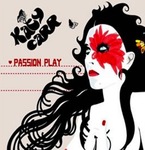
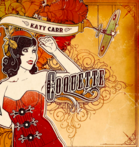
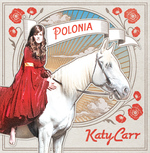
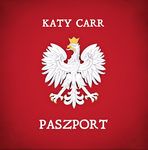
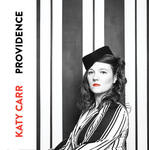
Katy Carr is an award winning British recording artist and has released 6 albums. An Ambassador of Polish History in Great Britain, her recent albums. Paszport (2012), ‘Polonia’ (2015) Providence (2020) are inspired by the Polish WWII experience. In 2016 Katy was awarded the Pro Patria medal for her humanitarian and musical work.
★ Katy Carr’s music quotes ★– ‘Carr is a fine example of that much-maligned beast we call Authenticity …’ – ‘never less than immaculate’ Sunday Times Culture Magazine– ‘Concept album of the Year’ The Guardian– ‘Her idiosyncrasy as a musician was meant to follow – even the most avowed labels fight shy of butterflies’ – ‘She’s a true original, standing out like the shine generated by a Swan Vesta applied to a cigarette in the Blackout.’ ★Katy Carr’s Awards★2016: Nominated Best Concept Album, Polonia, Independent Music Awards2016: Pro Patria Medal (Poland) 2014: Honorary membership, Polish 1st Armored Division 2014: Best Concept Album, Paszport, Independent Music Awards 2013: Nominated for Best Artist, Songlines Music Awards 2013: Polish Daily Award for Culture 2012: Nominated for the National Lottery Good Causes Award2011: Nominated for the London Music Award
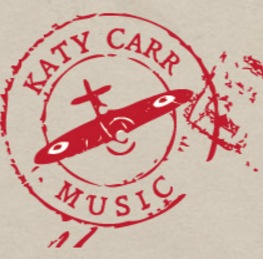
© 2023 Katy Carr. All rights reserved.Illustration and web graphics Susan Burghart © 2023❤️❤️❤️✸✸✸✸✸

